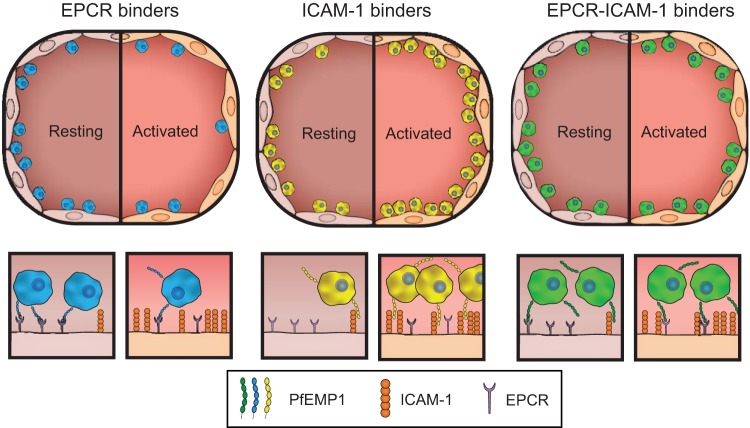FIG 7.
P. falciparum presents heterogenous binding to resting and activated 3D brain microvessels. Hypothesized model of parasites with different cytoadhesion phenotypes binding at different stages of infection: asymptomatic/early infection (resting endothelium) and late infection with disease (activated endothelium). Overall, the three parasite lines display similar binding levels on resting endothelium, except ITGICAM-1 had higher binding levels at WSS of >1 dyn/cm2. Conversely, the parasite lines diverge in response to endothelium activation. IT4var19 and 3173-S (DC8-EPCR binders) presented a reduction in binding to activated endothelium, ITGICAM-1 (dual CD36 and high ICAM-1 affinity) presented an increase of binding to activated endothelium, and HB3var03 (dual EPCR and low ICAM-1 affinity) presents similar binding levels in both states. The lower schematic illustrates how PfEMP1 variants with different combinatorial binding properties may provide the parasite with a sophisticated strategy to rapidly adapt to changes in EPCR and ICAM-1 expression levels that accompany endothelial activation.

